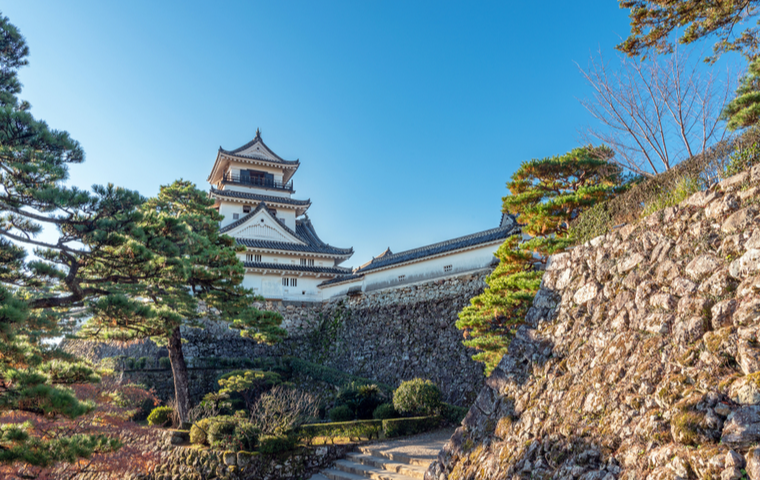TGS 2025 Concludes: 260,000 On-Site Fans and 6 Million Online Viewers
Related Articles
Proof of Full Revival and Globalization: 260,000 Pack the Venue as Exhibitors Hit a Record High
Held from September 25–28, 2025, Tokyo Game Show 2025 (TGS 2025) powerfully signaled to Japan and the world that the nation’s game industry has emerged from the long tunnel of the pandemic and entered a new growth track. According to organizer CESA (Computer Entertainment Supplier’s Association), total attendance over the four days reached 263,101. This figure symbolizes a “full revival” recapturing pre-COVID fervor, while, in an age where online events have taken root, spotlighting the fundamental reasons people still flock to physical venues: the value of being among the first in the world to experience major publishers’ new titles, and the communal “heat” that arises when tens of thousands share the same space.
Yet the true success of TGS 2025 lies beyond a recovery in footfall: its role as an “international business hub” expanded dramatically. This year set a new record with 1,136 exhibiting companies and groups from 47 countries and regions. If public attendance reflects the domestic market, then exhibitor count—especially the overseas share—is a more telling barometer of how the global industry values “TGS” as a platform. Participation from 47 countries and regions shows that TGS is no longer an inward-looking Japanese trade fair; it has transformed into an essential business hub used by publishers, developers, and investors from Europe, the U.S., and Asia as a strategic springboard into Asian markets (Japan, China, Southeast Asia).
This strengthened B2B function appears clearly in the numbers. Business meetings conducted via the “TGS Business Matching System” totaled 3,591. Behind the public excitement, publishing deals, tech partnerships, M&A, and investments were actively discussed and decided. This robust economic core as a business event was TGS 2025’s greatest achievement. As a direct result, CESA announced at closing that “Tokyo Game Show 2026” will be held over an unprecedented five days, September 17–21, 2026. This is more than a simple one-day extension: it signals a fundamental redesign of the business-day structure to further elevate TGS’s value as a B2B hub and cement its status alongside global fixtures like gamescom and GDC.
A Second, Global TGS: 6 Million Tune In to the Online Strategy

While 260,000 fans generated fervor at the physical venue, a far larger “second TGS” unfolded in parallel online. CESA reported that the 21 official programs streamed during the show drew a total of 6,069,556 views. The ratio between on-site attendees (~260,000) and online viewers (~6.06 million) is roughly 1:23—clear evidence that TGS successfully ran “two events” at once, delivering optimized value to distinct audiences.
What began as online programming during the 2020 pandemic has become a permanent pillar, not a stopgap. In this hybrid strategy, the real venue is the place for “hands-on experiences and B2B meetings,” while online serves as a “global B2C marketing stage” for the masses. This dual-engine model underpins the confident, future-facing decision to expand TGS 2026 to five days.
The 6-million-plus figure was no accident of merely flipping on a stream; it came from a highly strategic “glocalized” distribution plan. Beyond the official TGS channels on YouTube, X (formerly Twitter), and Twitch, TGS partnered with top media in target markets: “IGN” for Western audiences and China’s major platforms “DouYu” and “bilibili” for the show’s largest strategic market. The results were decisive: by platform, China’s DouYu topped viewership. This demonstrates China’s immense latent demand for Japanese game content—and the success of a localization strategy that delivers content across language barriers. By collaborating with each region’s key platforms rather than insisting on its own, TGS evolved into the world’s most efficient launchpad for Japanese games.
Champions of the “Now” and the “Next”: Metaphor’s Coronation and the Playable Wars of the Big Publishers
The beating heart of TGS—the source of the on-site fervor—is, of course, the games themselves. On that front, TGS 2025 cast a vivid contrast between the “now” (current hits and established IP) and the “next” (creation of new IP). As the emblem of the future, the show’s highlight, the “Japan Game Awards 2025,” bestowed its highest honor, the Grand Award (Game of the Year), on Metaphor: ReFantazio, a wholly new IP developed by Atlus (SEGA group). From a global perspective, this selection is striking. Historically, the Grand Award often went to established, nationally or globally successful series like Monster Hunter or The Legend of Zelda. Amid a venue teeming with powerful sequels, awarding the industry’s top honor to a completely new IP signaled to the world that Japan’s game industry refuses to rest on past laurels—showcasing a strong creative will to birth the next worldwide hit (a “next Persona”) and the critical ecosystem willing to reward it.
Meanwhile, the “now” that electrified 260,000 attendees was unmistakably the renewed “playable war” among major publishers. Video-only booths, common during the pandemic, receded, as companies brought in-development flagships in playable form. Capcom mounted an overwhelming offensive: it gave the world’s first large-scale hands-on demos of two titans slated for Q1 2026—Resident Evil: Requiem (due Feb 27) and Monster Hunter Stories 3: Twin Dragons of Fate (due Mar 13). As expected, both won the Japan Game Awards “Future Division,” and life-size character statues created photo spots that dominated chatter. Sony Interactive Entertainment’s PlayStation booth also impressed, offering playable demos of 14 PS5 titles, including Nioh 3, Capcom’s new Onimusha: Way of the Sword, and Netmarble’s open-world RPG The Seven Deadly Sins: Origin, underscoring both platform scale and third-party strength. Riding the momentum of its Grand Award, SEGA/Atlus unveiled a remake of series favorite Like a Dragon Kiwami 3, while Sonic Racing: Crossworld let fans try a crossover roster that spilled beyond its own IP, featuring “Hatsune Miku,” Joker from Persona 5, Ichiban Kasuga from Like a Dragon, and even characters from Minecraft. This emphasis on playability restored TGS to the essence of a game show.
Footsteps of Change: The Rise of PC and Indie Talent Pointing to Gaming’s “Next”

Behind the AAA frenzy from major publishers, TGS 2025 highlighted two quieter structural shifts reshaping Japan’s market—trends that will define the next decade.
First is the genuine takeoff of the PC game market. For many global observers, Japan has long equated to “console and mobile.” That notion is rapidly becoming outdated. PC hardware brands commanded striking presence on the floor. At HP’s Omen booth, a new VALORANT-themed PC debuted, with HP leadership publicly emphasizing the rapid rise of PC gaming in Japan. ASUS’s reveal of the “ROG Xbox Ally X,” a high-performance Windows handheld, further blurred the line between console and PC. Fueled by esports, PC gamers—especially among the young—are surging. For global PC publishers (Steam, Epic Games Store), the message is clear: Japan has truly lifted off as a “third pillar” alongside console and mobile.
Second is the ascent of indie games. While AAA studios deploy vast budgets to maximize existing IP, design innovation is increasingly bubbling up from the indie scene. At SOWN 2025 (Sense of Wonder Night), TGS’s official showcase for originality, Japan’s TearyHand Studio took a triple crown with DAREKARE (Audience Award Grand Prix, Best Arts Award, Best Presentation Award). Taiwan’s “Wenzi Youxi” won Best Game Design for Word Game. Experimental voices from across Asia converged, unearthing niche demand and opening new possibilities in game design beyond the reach of the majors.
These two structural shifts—PC’s rise and indie’s momentum—are tightly linked: for many indie developers, the primary battleground is PC (chiefly Steam), not consoles with higher barriers to development and distribution. As Japan’s domestic PC market matures, local indies like DAREKARE can establish revenue at home before going abroad, creating a virtuous cycle.
In sum, TGS 2025 established a dual engine—on-site (260,000) and online (6.06 million)—and reignited the “playable wars” of the giants. At the same time, deeper undercurrents—the rise of PC and indie—are poised to reshape Japan’s gaming ecosystem itself. This comprehensive success and forward momentum emboldened CESA to make a confident call for TGS 2026’s “first-ever five-day run.”



